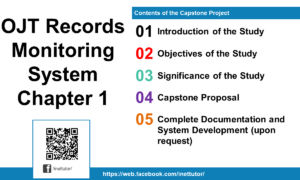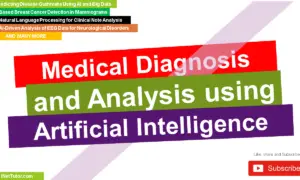Innovative IT Solutions for Sustainable Agriculture and Environmental Management
Introduction
Table of Contents
In today’s rapidly evolving world, Information Technology (IT) plays a crucial role in transforming the agricultural and environmental sectors. Innovative IT solutions are reshaping how we approach farming, resource management, and sustainability. By integrating advanced technologies, we can optimize agricultural practices, enhance productivity, and promote environmental stewardship.
The importance of integrating technology in these sectors cannot be overstated. IT solutions provide farmers and environmental managers with tools to make informed decisions, improve efficiency, and reduce waste. With the right technologies, we can achieve sustainable agriculture that not only meets food production needs but also preserves natural resources for future generations. Embracing these innovations is essential for building a resilient and sustainable agricultural system that benefits both the environment and society.
Benefits of IT Integration in Agriculture
Integrating IT solutions into agriculture brings numerous advantages that enhance productivity and sustainability. Here are some key benefits:
Increased Crop Yields and Reduced Waste
By utilizing advanced technologies such as precision agriculture and data analytics, farmers can closely monitor crop health and growth conditions. These technologies enable them to apply the right amount of nutrients and pesticides precisely when needed, resulting in higher crop yields. Additionally, optimizing resource use helps minimize waste, ensuring that inputs are used efficiently.
Efficient Resource Use (Water, Fertilizers)
IT solutions enable better management of water and fertilizers through smart irrigation systems and soil monitoring sensors. These technologies provide real-time data on soil moisture levels and nutrient availability, allowing farmers to apply water and fertilizers only when necessary. This not only conserves vital resources but also reduces costs and environmental impact.
Improved Decision-Making with Real-Time Data
Access to real-time data empowers farmers to make informed decisions regarding crop management and resource allocation. Tools like drones and IoT sensors provide valuable insights into field conditions, pest activity, and weather patterns. With this information, farmers can quickly respond to challenges, optimize their operations, and enhance overall productivity.
Minimizing Environmental Footprint
The integration of IT in agriculture contributes to minimizing the environmental footprint of farming practices. By promoting precision farming techniques, farmers can reduce chemical runoff and soil degradation. Moreover, efficient resource management decreases water usage and greenhouse gas emissions, supporting a more sustainable approach to agriculture that protects natural ecosystems.
IT integration in agriculture not only boosts productivity and efficiency but also fosters a more sustainable relationship between farming practices and the environment. These benefits highlight the importance of embracing innovative technologies in the agricultural sector for a greener future.
15 Innovative IT Solutions
Here are 15 innovative IT solutions for sustainable agriculture and environmental management, including both software and hardware project ideas, along with their descriptions and suggested development tools.
- Precision Agriculture Software
Description: Develop a software platform that analyzes data from sensors and satellite imagery to optimize farming practices, such as planting schedules and resource allocation.
Development Tools: Python, R, GIS software (QGIS, ArcGIS), and cloud platforms (AWS, Azure).
- Smart Irrigation System
Description: Create a hardware and software solution that uses soil moisture sensors to automatically control irrigation systems, ensuring optimal water usage based on real-time soil conditions.
Development Tools: Arduino or Raspberry Pi for hardware, Python or C++ for software, and IoT platforms (ThingSpeak, Blynk).
- Crop Health Monitoring with Drones
Description: Utilize drones equipped with multispectral cameras to capture images of crops, enabling farmers to monitor plant health and detect diseases early.
Development Tools: Drone software (DJI SDK), image processing libraries (OpenCV), and GIS software for analysis.
- Farm Management Information System (FMIS)
Description: Develop a comprehensive web-based application that helps farmers track and manage their operations, including crop planning, inventory management, and financial records.
Development Tools: MERN stack (MongoDB, Express, React, Node.js), or Django with PostgreSQL.
- Blockchain for Supply Chain Transparency
Description: Implement a blockchain solution to trace the origin of agricultural products, ensuring transparency and accountability in the food supply chain.
Development Tools: Ethereum or Hyperledger frameworks, Solidity for smart contracts, and web frameworks (React, Angular).
- Automated Pest Detection System
Description: Create an AI-based software solution that uses computer vision to identify pests and diseases in crops through images captured by smartphones or drones.
Development Tools: TensorFlow or PyTorch for machine learning, OpenCV for image processing, and mobile app frameworks (Flutter, React Native).
- Weather Prediction and Alert System
Description: Develop a mobile app that provides localized weather forecasts and alerts for farmers, helping them make better decisions about planting and harvesting.
Development Tools: API integration (OpenWeatherMap), React Native or Flutter for mobile app development, and cloud services (Firebase).
- Soil Health Monitoring System
Description: Build a system that uses soil sensors to monitor pH, moisture, and nutrient levels, providing farmers with data to improve soil health.
Development Tools: Arduino for sensor integration, Python for data analysis, and cloud platforms for data storage.
- Energy Management System for Farms
Description: Create a software application that monitors and optimizes energy consumption in agricultural operations, focusing on renewable energy sources.
Development Tools: IoT devices (Raspberry Pi, Arduino), data visualization libraries (D3.js), and cloud platforms for analytics (Google Cloud, AWS).
- Livestock Management Application
Description: Develop a mobile app for farmers to track livestock health, breeding cycles, and feeding schedules, integrating RFID for animal identification.
Development Tools: React Native or Flutter for mobile app development, Firebase for backend services, and RFID hardware components.
- Carbon Footprint Calculator for Farms
Description: Create a web-based tool that helps farmers calculate their carbon emissions based on farming practices, promoting strategies for reduction.
Development Tools: Web frameworks (Django, Flask), JavaScript for front-end interactivity, and cloud databases (MongoDB, PostgreSQL).
- Community-Based Resource Sharing Platform
Description: Build a platform where farmers can share resources, such as equipment and tools, to promote sustainability and reduce costs.
Development Tools: PHP with Laravel or Node.js for the backend, React or Vue.js for the frontend, and SQL databases (MySQL, PostgreSQL).
- Hydroponics Management System
Description: Develop an automated hydroponics system that monitors and controls nutrient delivery, water levels, and light conditions for optimal plant growth.
Development Tools: Raspberry Pi for control, Python for programming, and sensors for monitoring conditions (temperature, humidity, pH).
- Waste Management Tracking System
Description: Create a software solution that helps agricultural businesses manage and track waste, including composting and recycling processes.
Development Tools: Web frameworks (Ruby on Rails, Django), mobile app development (React Native), and database management (MySQL).
- Environmental Monitoring Station
Description: Design a hardware solution with sensors to monitor air and soil quality, providing data for farmers and researchers on environmental conditions.
Development Tools: Arduino or Raspberry Pi for hardware, Python for data processing, and cloud storage solutions (AWS, Google Cloud) for data accessibility.
These project ideas provide a diverse range of innovative IT solutions aimed at enhancing sustainable agriculture and environmental management. Each idea emphasizes the integration of technology to improve efficiency, transparency, and environmental impact.
Challenges in Adopting IT in Agriculture and Environmental Management
While integrating IT solutions in agriculture and environmental management offers numerous benefits, several challenges can hinder their adoption. Here are some key obstacles:
High Initial Costs for Technology Implementation
Implementing advanced IT technologies can require significant initial investments. Farmers and agricultural businesses may face high costs for purchasing hardware, software, and the necessary infrastructure. Small-scale farmers, in particular, might struggle to afford these upfront expenses, making it difficult for them to adopt innovative solutions. Additionally, ongoing maintenance and upgrades can add to the financial burden, potentially discouraging investment in technology.
Skill Gaps and the Need for Farmer Training
Another challenge is the existing skill gap among farmers and agricultural workers. Many individuals in the agricultural sector may lack the technical knowledge or training to effectively utilize new technologies. This gap can lead to underutilization of IT solutions, diminishing their potential benefits. Providing adequate training and support is essential to ensure that farmers can confidently use technology to enhance their practices. Without proper education and resources, the full advantages of IT integration may remain untapped.
Data Privacy and Security Concerns
As technology becomes more integrated into agriculture, concerns regarding data privacy and security emerge. The collection and storage of sensitive information, such as farm management practices, financial data, and environmental conditions, can pose risks if not properly managed. Farmers may be hesitant to adopt IT solutions due to fears of data breaches or misuse of their information. Ensuring robust cybersecurity measures and transparent data handling practices is vital to building trust and encouraging the adoption of IT technologies in agriculture and environmental management.
Conclusion
The integration of Information Technology (IT) into agriculture and environmental management has the potential to transform these sectors significantly. Through innovative solutions, farmers can achieve higher crop yields, optimize resource use, and make informed decisions based on real-time data. IT advancements also promote sustainability by minimizing waste and reducing the environmental footprint of farming practices. As we embrace these technologies, we move closer to a future where agriculture is not only productive but also environmentally responsible.
However, the journey toward widespread IT adoption is not without challenges. Addressing issues such as high initial costs, skill gaps, and data security concerns is essential to ensure that all stakeholders can benefit from these advancements.
Now is the time for farmers, policymakers, and technology developers to collaborate and drive the adoption of innovative IT solutions. By investing in technology and training, we can create a sustainable agricultural ecosystem that supports both food production and environmental health. Let us take action today to leverage the power of technology and pave the way for a more sustainable future in agriculture and environmental management.
You may visit our Facebook page for more information, inquiries, and comments. Please subscribe also to our YouTube Channel to receive free capstone projects resources and computer programming tutorials.
Hire our team to do the project.

